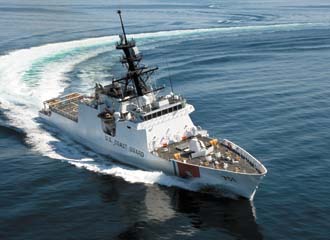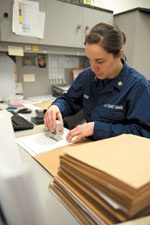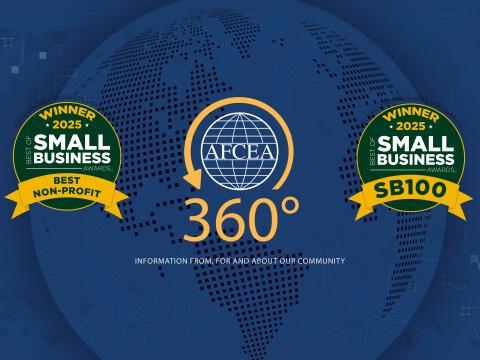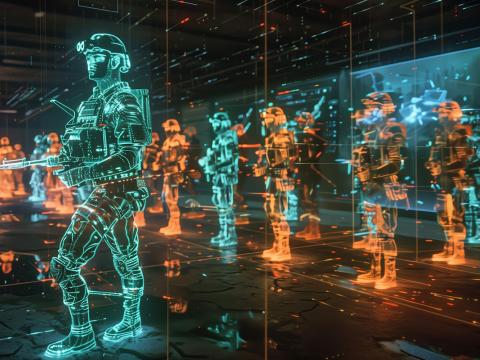Coast Guard Logistics Learns Social Media
 |
| The U.S. Coast Guard Cutter Waesche, the newest of its National Security Cutters, powers through the waters of the Gulf of Mexico. A future Coast Guard logistics acquisition effort is being driven by new social media applications. |
A future U.S. Coast Guard acquisition strategy may owe its design to social media such as a wiki and an interactive blog site. That is not to say that those activities will define the architecture of the new acquisition strategy; that particular decision is well in the future. What the Coast Guard is doing right now is using social media to develop its new acquisition strategy transparently and collaboratively.
This use of social media is bringing together elements of the Coast Guard’s logistics and acquisition community. They are providing input for the development of the Coast Guard Logistics Information Management System, or CG-LIMS. This information technology system is designed to consolidate Coast Guard logistics systems into a standard set of information technology tools and processes that would encompass all logistics lifecycle support functions.
Yet that input is providing the Coast Guard with valuable information beyond the main task of structuring CG-LIMS. Project managers are learning how the acquisition community responds to unfamiliar social media tools in familiar activities. These lessons can be applied to the new acquisition strategy as well as to future strategy development.
Undertaking a system acquisition for an information technology system that supports business modernization is not a new challenge. The Coast Guard set out years ago to consolidate its logistics business processes and move them toward a single business model in a single information technology system.
However, the effort faced the possible pitfall of an acquisition strategy that would be more complex and difficult than existing procedures. The process of building that strategy began to fall into that pitfall. Last summer, the federal Office of Management and Budget issued guidance on how government should implement systems such as CG-LIMS, which compelled the Coast Guard to change its approach. To meet that challenge, the Coast Guard began employing available social media tools.
As new people were brought into the project, the Coast Guard leveraged a blog tool that was available on Intelink. This blog tool, based on WordPress, allowed the project manager to bring these new team members up to speed on the transition effort.
Then, as the project progressed, managers noticed that people who responded to the sources-sought notice clearly had accessed and used that blog. So, these managers decided to keep the playing field level and periodically export the blog to WordPress so its information would be available equally to everyone on the Internet.
Capt. Daniel P. Taylor, USCG, is the project manager for CG-LIMS. He notes that well before the appearance of social media, the Coast Guard has had a culture of “if you’re responsible for it, you can speak to it.” Successive Coast Guard commandants have encouraged the use of new tools to deliver the message to whomever should receive it. For Capt. Taylor as the acquisition project manager, the tools allow him to communicate both with his staff and with industry.
In addition to tapping the intelligence community for Intelink, the Coast Guard looked elsewhere in the U.S. government for opportunities to leverage appropriate tools. In the General Services Administration (GSA), the Coast Guard found a simple platform based on open-source tools—citizen.apps.gov. Anyone with a .mil or a .gov e-mail address could visit this site and use a number of different tools such as open-source wikis, blog platforms and bulletin board tools.
This allowed the Coast Guard to custom-build a site where it could share new information with industry, respond to its questions and obtain industry insight into alternative acquisition strategies, the captain relates. The wiki helped assess how the CG-LIMS strategy development could be made more manageable, particularly in terms of system requirements and execution.
“It was very useful to solve the short-term need that I had to communicate rapidly with industry and others, to share where we were and get their feedback on potential directions that we might take and use them as a sounding board,” he says. “We learned some lessons that we’re rolling into the GSA team that’s working on [U.S. Chief Information Officer] Vivek Kundra’s 25 Point Implementation Plan to Reform Federal Information Technology Management. The lessons we learned using this wiki are something that they are taking alongside their experience using a wiki for an actual RFP [request for proposals],” Capt. Taylor states.
Neither of these platforms will be the specific chosen technology for CG-LIMS, nor will the procedures used turn out to be the way that the plan is accomplished, the captain points out. However, the project team has learned valuable lessons that illustrated what works and what does not.
 |
| A Coast Guard petty officer 2nd class stamps a procurement file as she sorts through paperwork in a sector logistics office in Anchorage, Alaska. Social media may ease the strain of processes and paperwork if efforts in the CG-LIMS program bear fruit. |
Instead, the captain relates, the effort received good feedback amid a willingness to examine problems objectively and share possible solutions. The approach provided a way for specific users to make changes as well as a way that users could send information directly to the project manager, who would post it anonymously. “I was frankly surprised by the amount of feedback that I did get, both by name and anonymously—some of it from large companies,” he allows.
Most users focused on clarification of requirements, the captain notes. While program leaders shared their own perspectives, no single piece of information can address all of industry’s concerns. Users proved to be very comfortable establishing dialogues that clarified what was being said by government. “That probably was the most useful [aspect] for us and industry,” he states. In some cases, it required the Coast Guard team to refer to federal acquisition regulations for specific definitions that they could apply to the users’ issues.
Capt. Taylor also admits that he was surprised by the “small amount” of vandalism that took place. Originally, he feared a potentially large management burden if he had to constantly clean up advertisements unrelated to the project or changes made to what he had written. Ultimately, he had to remove only one page generated by a company selling a service unrelated to CG-LIMS.
The captain relates that he expected the wiki to be just a three-month experiment of a new concept. Instead, it proved to be more useful than anticipated as well as less of a management burden. While this wiki is not going to be the basis for CG-LIMS, it does show how this type of collaborative platform can serve a useful role before RFP issuance. For the short term, it may be useful for other projects in the Department of Homeland Security (DHS) until government provides an enterprise tool for that purpose.
However, using a wiki such as this one does have problems. The learning curve is too great for this to be a final solution, Capt. Taylor allows. Both program leaders and users must be comfortable in that environment, and this wiki seems to be too complicated for users to exploit easily. He adds that this attitude may change over time as more wikis become part of government and industry interaction.
And, information sharing is a problem, as both government and industry are reluctant for their own reasons. Government must ensure that it does not share source selection information, per federal acquisition regulations, and it needs to set guidelines on the information that it should share—and at which point in the process, the captain says.
Capt. Taylor offers one item that he wishes he and his team had done differently. When a focus group discussed requirements for the collaboration tool, the consensus was that everyone wanted simple operations. When his team constructed the wiki, the framework that was developed was designed to support its use over three months. However, structural changes that he made to it based on user dialogue were not as usable. The main culprit was the lack of a site map that would describe the pages and their roles in the wiki. And, when he discovered that people were using a main page as a site map, he changed it without knowing how people were using it. The wiki would have worked better with an original site map and an unchanging structure so that users would have found a simpler operation.
“Usability is paramount,” the captain says. “I didn’t make it as simple as I would have if I’d had these three months of experience.”
Coast Guard leadership must approve the final acquisition strategy for the project. The tools currently being used may have set the tone for a collaborative transparent relationship, Capt. Taylor offers. “Hopefully, six months from now, some of what we’ve learned will help shape what the federal government starts using for the implementation of the 25 points.
“What we’ve done ourselves hopefully will go away as an experiment that will be replaced by something that is a governmentwide solution that we can start using,” Capt. Taylor concludes. He adds that government can apply this approach to virtually any purchasing effort.
These are just tools, the captain emphasizes, adding that, “There is no magic answer in a tool. The biggest part of using tools like this isn’t the tools themselves; it’s the cultural change that says, ‘It’s not just OK, it’s imperative that we coordinate pre-RFP work of government with the people who are going to be satisfying those needs post-RFP—and there are technologies available that will let us do it transparently and keep the playing field level.’”
WEB RESOURCES
CG-LIMS: www.uscg.mil/acquisition/cglims
CG-LIMS blog: http://cglims.wordpress.com
CG-LIMS Wiki: http://go.usa.gov/CWp




Comments